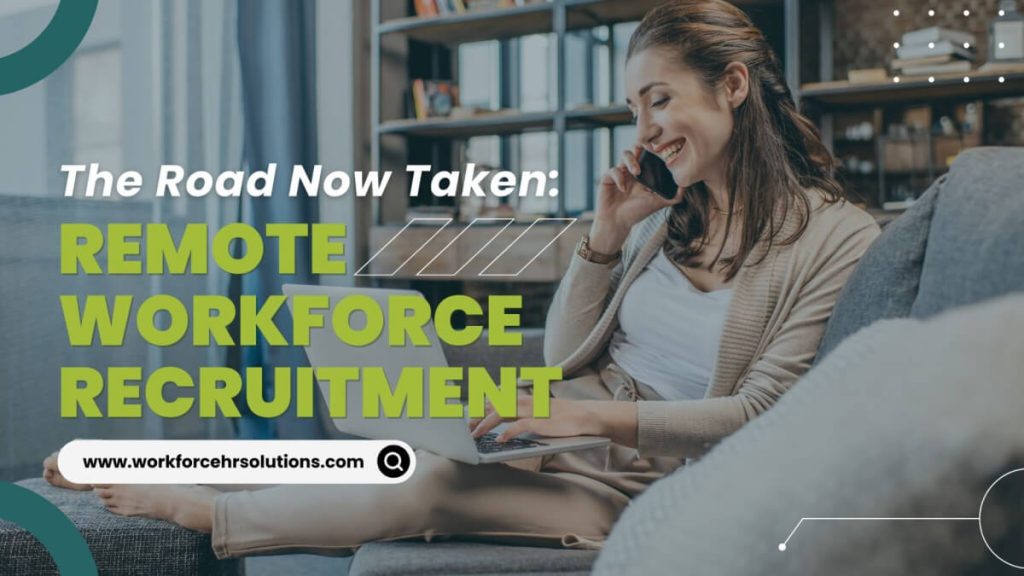You sprint to the road you usually take, but you were suddenly stopped and kicked to the road less traveled by. Well, at least Robert Frost (unlike us) had a choice and he chose the road not taken. But, whether it’s forced or by choice, he was right. It has made all the difference. Three years ago, we had to let go of what’s normal; the usual out-of-towns, social gatherings, even the daily commute to work and the hustle and bustle of the workplace. It’s unsettling, threw you off balance even.
Fast forward to the present, and two roads, yet again, diverge. You are given an opportunity, unlike Frost, to go back and choose. You can easily opt for the one you were supposed to take, but, having taken the road less traveled by, you know now that “normal” is not always what’s best, and what you’re used to is not necessarily what you want.
Remote work is a route not commonly taken before the pandemic but after facing COVID-19 and all its restrictions, as well as the “Great Resignation Era,” more employers have taken a leap to remote workforce recruitment and management. In fact, 76% of business owners think that remote work will be the new normal. Furthermore, it is projected that 36.2 million U.S. workers will be remote by 2025.

Hiring remote employees will not only help you combat the “Great Resignation Era,” it will also provide you with talents and skills rarely found in your area. Here are some of the best practices when recruiting remote employees.
Establish and Strengthen Your Employer Brand Online

If you are a small or medium local business, the best way to reach out to jobseekers across the U.S. and in other countries is by establishing and leveraging your online presence to introduce your employer brand and position yourself as an employer of choice for remote employees.
Here are some platforms you can use:
1. LinkedIn
LinkedIn is an online professional networking site where employers can create their business pages, publish photos, feature their blogs, and post their job openings. Ensure that your employees have your business listed as their workplace for credibility and better visibility.
2. Facebook
Facebook is still the most used social media platform in the U.S. with 74.2% of all social media users enrolled. Furthermore, it is saturated with 25 to 34 year olds which make up a majority of the working population. This makes Facebook the best social media site to get leads from.
3. Instagram
Instagram has evolved into a lifestyle sharing application so it’s the perfect spot to promote your people and culture by posting videos and photos of your employee engagement activities and events. It’s also a space where you can share employee testimonials to present your company’s values and way of working, and highlight your employee wellness programs and benefits. Leave the hard selling to LinkedIn and Facebook, and utilize Instagram for your brand to grow on your audience.
4. Website
Leads may come from different online platforms, but it’s usually inside a company’s website where they make the final decision on whether to apply or not. Create a website that catalogues all information about your company such as your mission, vision, core values, culture, employee engagement, benefits, and job openings.
Comb through Your Talent Pool and Old Employees Database

There may be talents whose applications you’ve rejected before because they live too far from your office, or old employees who left on good terms but resigned because they were moving somewhere far or due to COVID-19. Whatever the reason, there may be a few which you can tap to return as remote employees.
Launch A Referral Program

Your best brand ambassadors are your employees. Encourage them to talk about you and to invite friends and acquaintances from other places to work for you, by incentivizing successful referrals. This can be done digitally with an established points and rewards system. As a bonus, you can also put up lead magnets on the online referral portal or landing page (Eg. Apply now and get a signing bonus/ special gift) to make it hard for referrals to refuse.
Use The Right Tools for Assessments

A lot of communication barriers, like language and cultural differences and physical barriers, must be overcome for a smooth application process. To top this off, imagine deciphering chopped sentences in between interview questions. That’s why various online tools are needed when conducting interviews and assessments for remote workforce applicants. Contact us now and we can recommend a few to you.
Ask The Right Questions.
Hiring remote employees in itself is a risk. Trust and confidence must be established from the beginning because he/she would have no one looking over his/her shoulders while working. The person you’re hiring must be someone who can work with limited supervision and has a strong work ethic. Asking the right questions can help you assess not only an applicant’s culture fit and skills, but also his/her work ethic.
Here are some questions you may want to ask:
- Do you have any experience working remotely?
- How do you maintain your focus when working from home?
- How do you manage your time?
- Compare your productivity when working offsite vs. onsite.
- Do you consider communication with your colleagues and boss a great challenge when working remotely? If so, how would you overcome it?
- What are the other challenges of working offsite and how would you overcome them?
- What would be your approach on work-life balance when you’re working offsite?
Most employers’ shift to remote workforce recruitment and management, although forced, has indeed made all the difference. Now the question is, is it the best route to opt for and how will employers manage it in the long run? Consult with us at Workforce Solutions today and find out if remote workforce recruitment and management is for you.

